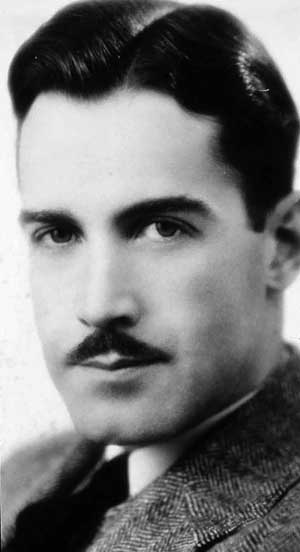On March 20, 1933, newly elected Governor Clarence D. Martin (1884-1955) appoints Lacey V. Murrow (1904-1966) as Washington's Director of Highways. Murrow is the second head of the highway department to hold the title. He succeeds Samuel J. Humes (1883-1941), who entered office as State Highway Engineer and became the first Director of Highways when the position was created in 1929. Murrow leads the department through most of the Depression years, presiding over major bridge and other construction projects and the development of a new highway code.
The Murrow Family
Lacey Van Buren Murrow was born in 1904 into a Quaker farming family in North Carolina. He was the oldest of the three surviving sons of Roscoe and Ethel Lamb Murrow. Murrow's youngest brother (who changed his name from Egbert) was the pioneering broadcast journalist Edward R. Murrow.
The family moved to Blanchard on Samish Bay in Skagit County around 1909. Murrow went to high school in nearby Edison, and then to Washington State College (now University). He worked his way through college in a number of jobs, including cutting brush on state highways.
Rapid Rise
After graduating in 1925, Murrow went to work full time for the Highway Department. Within a few years he was District Engineer for the Spokane district. He was still in his 20s when Governor Martin appointed him Director of Highways in 1933.
Murrow took office at the height of the Depression. The Highway Department became one of the primary sources of relief work for the unemployed, and for the first time was responsible for bonded debt as a result of $10 million in emergency relief bonds enacted by the 1933 Legislature. Although there was a slight decline in construction, the department completed numerous projects during Murrow's tenure, including the state's first controlled access highway (on Mercer Island), Deception Pass Bridge, access roads and a Columbia River bridge at Grand Coulee Dam, and the Tacoma Narrows bridge (which collapsed shortly after it opened). Under Murrow an entirely new highway code developed by the Department was enacted by the Legislature and the Toll Bridge Authority was established.
Floating Bridges and Flying Planes
Murrow's best-known accomplishment was the first Lake Washington Floating Bridge (also known as the Mercer Island Bridge). In 1937, he approved the idea for a concrete pontoon floating bridge across the lake that Homer Hadley first proposed in 1921. The bridge opened in July 1940, shortly before Murrow left office.
For years, Murrow enjoyed flying airplanes as a hobby. He was commissioned as a second lieutenant in the Army Reserve in 1936 and was called to active duty in 1940. He resigned as Director on September 15 and joined the Army Air Corps as a lieutenant colonel the next day. Murrow served with the Second Air Force during World War II and remained in the military after the war, rising to the rank of brigadier general and receiving numerous awards.
Murrow retired from the Air Force in 1953 and spent his last years in Arizona working for an engineering firm. Like his brother Edward, Lacey Murrow was a heavy smoker who suffered from lung cancer. Edward R. Murrow died of the disease in 1965. On December 16, 1966, Lacey Murrow shot himself to death. After Murrow died, the Washington State Legislature passed a resolution urging the Highway Commission to rename the first Lake Washington Floating Bridge in Murrow's honor. The Commission agreed and the bridge was rededicated as the Lacey V. Murrow Memorial Bridge in 1967.

